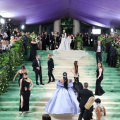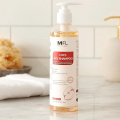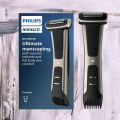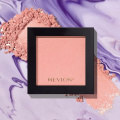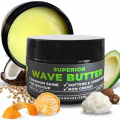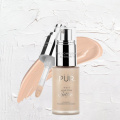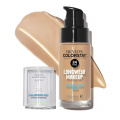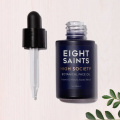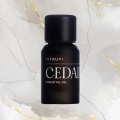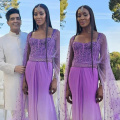Can You Bleach Your Hair Twice? - Clear Your Bleaching Dilemmas
Can you bleach your hair twice is a common question that arises when you are in the urge to transform your hair color. Here we are to guide you through the process.
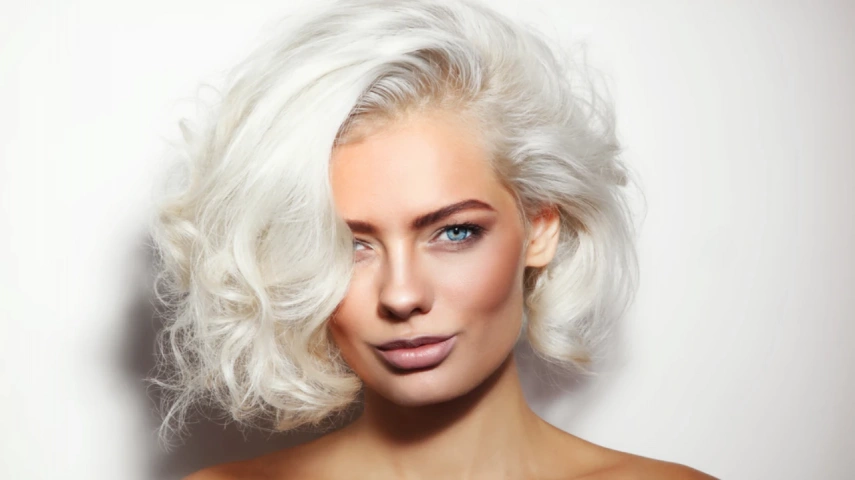
With bleaching hair becoming a trend in recent times, “Can you bleach your hair twice?” is a query that most of us have. Bleaching is a common technique to obtain those vibrant pastels and blues. Some even prefer gold or platinum blonde. However, many have a dilemma with bleaching. That too, many are unsure if it's okay to bleach their hair more than once. Whether you want vibrant, eye-catching colors or more muted, washed-out hues, it is essential to have a solid understanding of the basics of bleaching. Thus, in this article, let’s examine the bleaching techniques and their negative effects in detail. Additionally, we'll go through how to prepare your hair for a second bleaching procedure and offer other helpful advice and cautions for both at-home and professional bleaching.
How Does Bleaching Work?
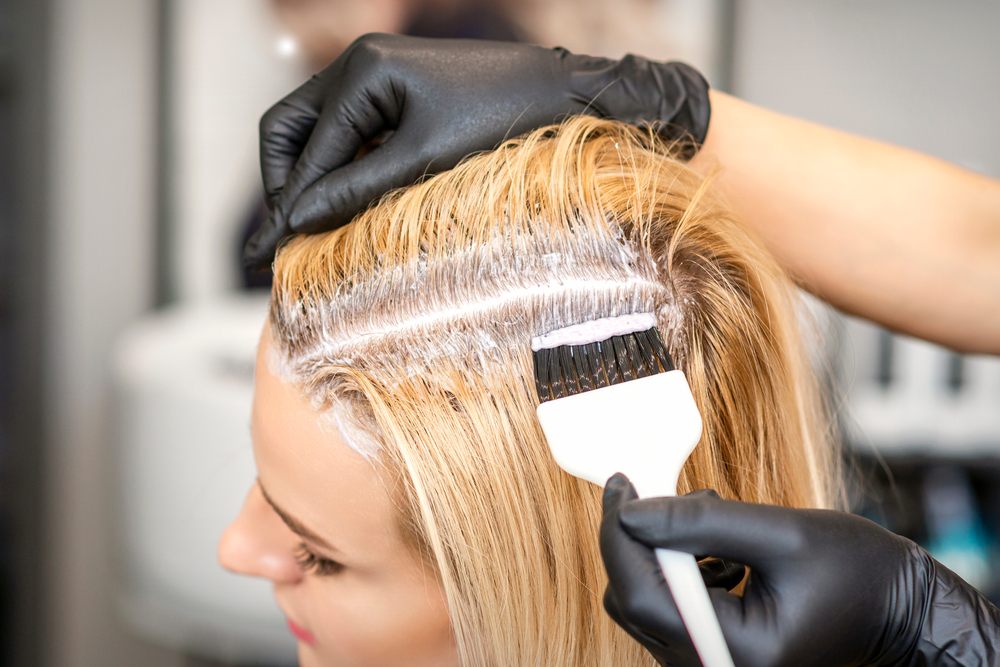
Bleaching is a chemical process by which the natural pigment in your hair is lightened. This pigment is termed melanin and bleaching involves removing this pigment. The bleaching agents work on the color molecules contained in the hair shaft. This agent is typically the one that contains hydrogen peroxide. Thus melanin is broken down by the bleach, which gives hair its color and lightens it into pale yellow or blonde (1).
Let’s Understand the Mechanism
Your hair's melanin pigment is oxidized by the chemicals in the bleach solution to become lighter. Hydrogen peroxide is one of the most popular oxidizing substances found in most hair bleaches. Besides that, your bleaches also have ammonia. They create an alkaline environment for peroxides to get into the hair (2).
Finally, melanin that has been oxidized by these agents, loses color, giving the appearance of lighter hair.
Your hair contains two different forms of melanin pigments: eumelanin and pheomelanin (2). The pigment that gives hair its black color, eumelanin, is primarily oxidized by bleach. Pheomelanin, the pigment responsible for giving hair its reddish hue, is enhanced by this. Thus bleached hair may look reddish orange on individuals with dark hair.
Once the bleach removes the color from your hair, the gloss or toner is added to introduce the color you've asked for.
Before delving into the intricacies of hair bleaching, it's crucial to understand the process itself. It is essential to approach this process with caution and care, as improper bleaching techniques can lead to hair damage, breakage, and even scalp irritation. We prioritize safety and encourage you to follow our step-by-step instructions for optimal results. Now let’s see how to evenly bleach hair at home with minimal damage.
Step 1: Preparing for Hair Bleaching
- First, it is crucial to assess the current health of your hair.
- If your hair is already damaged, brittle, or over-processed, it is advisable to avoid bleaching for a while.
- Or else consult with a professional hair stylist or colorist as they may provide personalized recommendations to minimize potential damage.
Step 2: Gathering Essential Supplies
- Hair Bleach: Choose a reputable brand known for its effectiveness and gentle formulation.
- Developer: Then select a developer with the appropriate strength (usually 20 or 30 volume) based on your hair's current condition and desired level of lightening (3). This is crucial as it assists bleach in lightening your hair.
Vol. 10 - It is perfect for lifting 1-2 levels of color on already light hair or gradually fading dyed hair. Thus dark hair will not work with this volume.
Vol 20 - A 20-volume developer might work if you have light brown hair and don't wish to lift many colors. This decreases the color by 2 to 3 levels.
Vol 30 - A volume 30 developer will assist in lifting hair color by 3–4 levels, but it shouldn't be left on the scalp for too long because it can irritate it.
Vol 40 - This can give your hair a lot of lift, but it can also be very harmful. If you do use it, be careful not to leave it on your hair for more than 10 to 15 minutes at a time to prevent damage.
- Gloves: Protect your hands from harsh chemicals with disposable gloves.
- Mixing Bowl And Brush: Use a non-metallic bowl and brush specifically designed for hair color application.
- Sectioning Clips: These will help you divide your hair into manageable sections for easier application.
- Protective Clothing: Wear an old shirt or cape to shield your clothing from potential bleach stains.
- Hair Conditioner: Have a deep conditioning treatment on hand to restore moisture and nourishment post-bleaching.
- Hair Toner (Optional): A toner helps eliminate unwanted brassy or yellow tones from bleached hair, creating a more polished look.
Do You Need a Cap Or Foil?
Foils can be useful for sectioning and retaining bleached areas of your hair apart. Additionally, it can aid in preventing the bleach from drying out.
Hair caps also assist in keeping the bleach from drying out. Also, it keeps the bleach from coming in contact with your outfit However, it doesn't aid in sectioning.
Both caps, as well as foils, can enhance the speed of the processing time (4).
Step 2: Performing a Strand Test
This is the most neglected step when it comes to hair bleaching. It allows you to assess how your hair will react to the bleach and determine the optimal processing time needed to achieve your desired level of lightening. Follow these steps to conduct a strand test:
- Select a small section of hair, preferably from an unnoticeable area, such as behind your ear.
- Follow the manufacturer's directions for preparing the bleach mixture.
- Apply the mixture to the selected strand and leave it on for the recommended processing time.
- Rinse the strand thoroughly, then evaluate the color result.
- This will help you determine if you need to make any adjustments to the process.
Step 3: The Bleaching Process
Now that you've completed the preliminary steps, it's time to move on to the actual hair-bleaching process.
You can directly apply bleach to your dry hair as bleach is already diluted in water. Also, bleach penetrates the hair cuticle when applied to dry hair. The melanin is then broken down once it reaches the cortex. Your hair will be lighter in color as a result of less pigment being present.
- First, put on your gloves and begin preparing the bleach mixture. For a suitable mixing ratio, adhere to the manufacturer's recommendations.
- Divide your hair into sections using the sectioning clips. This will ensure even application and consistent results.
- Begin applying the bleach mixture to your hair, starting from the ends and working your way up toward the roots. Keep bleach away from the scalp while you're using it.
- Once all sections are covered, allow the bleach to develop according to the strand test results and the manufacturer's instructions.
- Regularly monitor the bleaching process by checking the color of your hair. Once you've reached your desired level of lightness, rinse the bleach out thoroughly.
- Shampoo your hair with a gentle, sulfate-free shampoo to remove any residue, and follow with a deep conditioning treatment to replenish moisture and nourishment.
Step 4: Aftercare And Maintenance
- Minimize Heat Styling: Excessive use of heat-styling tools can further damage bleached hair. Embrace air-drying whenever possible and use heat-protectant products when heat styling is necessary.
- Hydrate And Nourish: Invest in high-quality hair care products specifically designed for bleached hair. Look for hydrating shampoos, conditioners, and leave-in treatments to restore moisture and prevent dryness.
- Protect from the Sun: UV rays can cause hair color to fade and lead to additional damage. Shield your hair from the sun by wearing hats or using UV protection sprays or leave-in conditioners (5).
- Consider Toning: If you notice unwanted brassy or yellow tones in your bleached hair, a toning treatment can help neutralize them and achieve a more desirable shade.
But can you bleach your hair twice? Yes, of course. It all depends on your hair's health and the time span between each bleach. Additionally, it is important to note that bleaching carries certain side effects. It is crucial to ensure that you are aware of these effects before proceeding with your hair bleaching sessions.
Side Effects of Bleaching Hair

Bleaching may help you achieve your desired hair color. But it's also crucial to be mindful of any possible negative effects. That too, before knowing if can you bleach your hair twice, it's vital to know the following side effects.
- Breaks Your Hair Protein: Bleach is an aggressive intruder that disassembles the proteins in your hair to remove color (1). Thus your hair is left with lighter strands when the bleach is removed. This also makes your hair strands more brittle, dry, and breakable.
- Scalp Burns: All the unnecessary heating and excessive treatment with bleaching agents can cause scalp burns (4). The harsh chemicals might also cause itchiness, redness, and irritation of the scalp.
- Hair Texture: Apart from the significant damage, the hair texture also changes with bleach. It gives a porous, straw-like texture that can eventually lead to hair loss (6).
- Affects Hair Cuticles: After bleaching the hair, the cuticles were lifted and removed from the hair surface in comparison to untreated hairs (4).
- Hydrogen Peroxide: Hair color oxidation happens when hair is exposed to chemicals or hair treatments. Especially, peroxide chemical in bleach causes untargeted oxidative damage across hair fibers (1).
Possible Side Effects of Hydrogen Peroxide
- Scalp irritation
- Hair loss
- Damages hair cuticles
How Often Can You Bleach Your Hair?

Your hair's texture, current health, and history of bleaching all have a role in deciding whether you can bleach your hair twice. In order to give your hair time to recuperate and lower the danger of damage, it is generally advised to wait at least 6 to 8 weeks between bleaching sessions. Even the American Academy of Dermatologists suggests waiting 8 to 10 weeks before processing your next bleaching sessions. They also advise against using more than one treatment on your hair at once in order to prevent breakage. Thus avoid getting bleach and perms on the same day (7).
However, until your hair has regained its health, it is better to prevent further bleaching or any other chemical treatments. Especially if your hair is susceptible to breakage or damage.
Re-bleaching- Don't re-bleach your entire head when it comes to touching up. Just bleach your hair roots or the newly grown ones. Your entire head being bleached repeatedly might cause hair loss.
Can You Bleach Your Hair Twice?
Although the damage produced by bleach is manageable you should avoid it. It is enough if you bleach once as a first-timer. Before bleaching a second time, let your hair rest for another 2 to 3 months to regenerate. After the second bleaching, you will have a lighter base. Thus do it only if necessary.
All you need to do is make sure your hair feels healthy because bleaching it twice could make it exceedingly frizzy and difficult to manage.
Swipe down to learn more about the ideal time gap between two bleaching sessions.
How Long Should You Wait to Bleach Your Hair Again?

There are many factors that influence whether can you bleach your hair twice:
1. Several things should be considered before selecting to bleach your hair a second time. The first factor to consider is how dark or light your natural hair color is. Bleaching might do more harm to dark hair. In such cases, stick to the 8 to 10 weeks time gap.
2. The general 8 to 10 weeks time frame enables your hair to restore vital moisture, regain strength, and reduce the danger of severe damage.
3. Then check the state of your hair right now to see if it can take more chemical treatment. Also, take into account the degree of damage caused by prior bleaching sessions.
4. Second, the amount of bleaching you use. It can be smaller amounts for highlights or global hair color that covers the entire hair length. This will also influence the degree of damage. Based on the damage, prolong the gap between the bleaching sessions.
5. Finally, it matters what kind of bleach you are using. There are harsher bleaching agents that should be avoided at all costs. In case you have used one, then try not to rebleach sooner.
How to Prep Hair for Second Bleaching Session?
To minimize the potential damage of a second bleaching session, it is crucial to prepare your hair adequately. Hence, make sure you follow these steps to ensure a great bleaching experience.
1. Consulting a Professional
While DIY hair bleaching is possible, we highly recommend consulting with a professional hairstylist. Especially when you are rebleaching. This will also ensure that your hair is in the best condition possible before bleaching.
2. Cleansing Your Hair
Begin the preparation process by thoroughly cleansing your hair. Use a clarifying shampoo to remove any product buildup, impurities, or excess oil. This step allows the bleach to work more effectively and evenly on your strands.
3. Conditioning Treatment
Next, treat your hair to a deep conditioning treatment. This step helps restore moisture, nourish your strands, and strengthen the hair fibers (6). Look for a high-quality deep conditioner that is specifically designed to repair and protect damaged hair. You can also use quality serums and oils on a regular basis. This nourishes your hair in between bleaching sessions so that it is prepared to withstand the second bleaching procedure.
4. Avoid Chemical Treatments
To minimize the risk of damage, it's important to avoid any other chemical treatments, such as perms or relaxers, prior to bleaching your hair. These treatments can weaken your hair and make it more prone to damage during the bleaching process (7).
5. Conduct Strand Test
Performing a strand test is a crucial step to determine how your hair will react to the bleaching process. Select a small section of hair, follow the instructions provided with your chosen bleach product, and observe the results. This test will help you assess the timing required and identify any potential allergic reactions.
6. Protect Your Scalp
Your scalp is sensitive and can be easily irritated by the bleach. To protect it during the bleaching process, consider applying a thin layer of protective barrier cream along your hairline and around your ears. This will act as a barrier, preventing the bleach from coming into direct contact with your skin.
Additionally, Prep Your Mind!
If you intend to bleach your hair for the second time, it's essential to mentally prepare yourself as well. Be aware that it will require a bit more maintenance than usual. Also, do your homework by analyzing your hair type and its needs.
Now that you've completed the pre-bleaching preparations, it's time to move on to the actual bleaching process. Follow the instructions provided with your chosen bleach product meticulously. Pay close attention to the recommended mixing ratios, application techniques, and processing times to achieve the best results. To avoid any possible errors, choose a professional hair colorist to do this work for you.
Tips And Warnings While Bleaching Hair at Home Or in Salon

If you're considering bleaching your hair, whether at home or in a salon, we've got you covered. We are here with some valuable tips and precautions to help you achieve your desired results while minimizing potential damage. Bleaching can be a transformative process, but it's important to approach it with caution and take the necessary steps to protect your hair's health.
Tips While Bleaching Hair At Home:
- First, ensure proper ventilation at home.
- Protect your skin and clothing from bleach stains
- Prep and condition your hair.
- Buy quality bleaching products.
- Select the right developer for your hair and avoid using Vol. 40 developers.
- Lookout for allergic ingredients in your bleach.
- Perform a strand test before applying it to the entire hair.
- Use disposable gloves while applying.
- Start applying from mid-length and work downwards.
- Use a proper applicator (brush) to evenly apply it.
- Set a timer according to the suggested processing duration.
- Regularly monitor the color change throughout the processing time. When it reaches the desired level of lightness, rinse immediately to prevent over-processing.
- Switch to a color-safe shampoo and conditioner specifically designed for bleached hair.
Tips While Bleaching Hair At a Salon:
- Wash and nourish hair for at least a day or two before bleaching. Don’t wash on the day of the appointment as it can strip your natural scalp oil off. You will need this natural oil as a protective barrier.
- Avoid heat styling before your appointment. This is because heat depletes your hair's moisture and natural oils.
- Communicate clearly with your hair colorist. Tell them how you've been prepping your hair for bleaching. Also, inform whether you've had any chemical treatments or previous bleach or dye reactions.
- Ask your stylist for a personalized hair care regime. You'll need to swap out your ordinary shampoo and conditioner for ones made specifically for bleached hair. Better use purple shampoo (toning shampoo) that has been designed for blonde and bleached hair.
- Get a trim to avoid split ends. Trimming also helps maintain the overall appearance of your lightened hair.
- Shield your hair from harmful UV rays by using hair products that contain UV filters or by wearing a hat when spending out of the salon (5).
- You may also want to revisit the salon for a root touch-up if needed.
Tips While Bleaching the Second Time
- Don’t bleach twice on the same day.
- Wait for at least 8 to 10 weeks before proceeding to your second bleaching session.
Warnings!
Bleaching hair is a chemical process that should be approached with caution. The following are some warnings and tips to keep in mind:
- Avoid overlapping the bleach on previously bleached sections to prevent excessive damage.
- Do not leave the bleach on for longer than the recommended processing time. Even at the salon, monitor the time.
- Never exceed the recommended bleach-to-developer ratio.
- If you experience severe scalp irritation or discomfort, rinse off the bleach immediately.
Most importantly, it is a time-consuming, and rigorous, process. It is specific to each person and their hair type, and no two bleaching encounters are ever the same.
Conclusion
Can you bleach your hair twice? Yes, bleaching your hair multiple times is possible. But it requires careful consideration and proper hair care. Understanding the bleaching process, its potential side effects, and allowing sufficient time for hair recovery are vital steps to minimize damage. Whether you choose to bleach at home or visit a salon, following guidelines, and taking precautions will help you achieve your desired hair color while maintaining the health and integrity of your hair. Finally, remember to prioritize the health and well-being of your hair throughout the process. With all set, you can start your hair bleaching journey with confidence, and embrace vibrant and expressive hair color!
Article Sources
1. The Physical And Chemical Disruption of Human Hair After Bleaching - Studies by Transmission Electron Microscopy and Redox Proteomics
https://pubmed.ncbi.nlm.nih.gov/30229956/
2. Research on Hair Bleach That Causes Less Hair Damage and Smells Less Pungent Than Ammonium Hydroxide
https://www.mdpi.com/2079-9284/5/2/39
3. Effect of Different Human Hair Bleaching Conditions on the Hair Coloration With Hair Boosting Shampoo as Colorant
https://link.springer.com/article/10.1007/s12221-010-0709-1
4. Significant Damage of the Skin and Hair Following Hair Bleaching
https://pubmed.ncbi.nlm.nih.gov/20860738/
5. UV Damage of the Hair
https://pubmed.ncbi.nlm.nih.gov/19138021/
6. Hair Colouring, Permanent Styling And Hair Structure
https://onlinelibrary.wiley.com/doi/abs/10.1111/j.1473-2130.2004.00064.x
7. How to Stop Damaging Your Hair
https://www.aad.org/public/diseases/hair-loss/insider/stop-damage





 JOIN OUR WHATSAPP CHANNEL
JOIN OUR WHATSAPP CHANNEL







